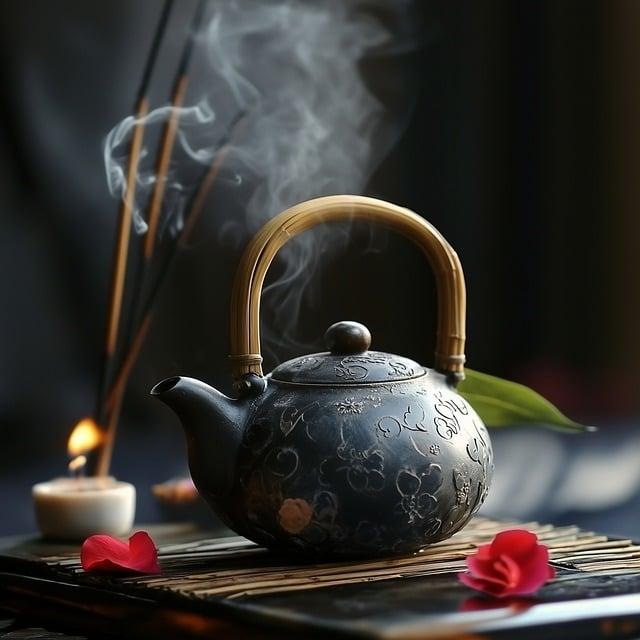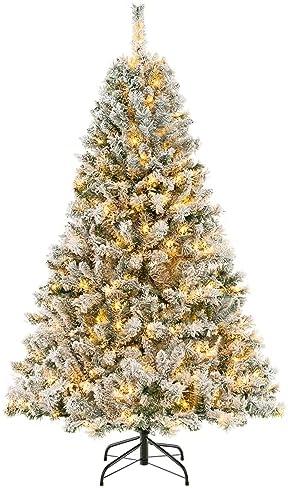Once upon a time, in a small village blanketed by snow, a kind-hearted woman named Elara decided to bring joy to her lonely home. She ventured into the forest and found a tall, evergreen tree, its branches heavy with the promise of warmth. She adorned it with shimmering lights and colorful ornaments, each representing a cherished memory. As the tree sparkled in the night, villagers gathered, sharing laughter and stories. The tree became a symbol of hope and togetherness, reminding everyone that even in the coldest winters, love and joy can flourish.
Table of Contents
- The Historical Roots of Christmas Trees and Their Symbolism
- Exploring Cultural Traditions and Variations in Tree Decoration
- The Psychological Benefits of Decorating a Christmas Tree
- Tips for Choosing and Personalizing Your Christmas Tree Experience
- Q&A

The Historical Roots of Christmas Trees and Their Symbolism
The tradition of adorning a tree during the winter season can be traced back to ancient civilizations, where evergreen trees symbolized life and resilience amidst the harshness of winter. The Egyptians revered palm fronds, while the Romans celebrated Saturnalia with greenery to honor their gods. In medieval Germany, the first decorated Christmas trees emerged, often adorned with fruits, nuts, and candles, representing the bounty of nature and the light of hope. This practice gradually spread across Europe, intertwining with local customs and evolving into the festive tradition we recognize today.
Beyond their aesthetic appeal, Christmas trees carry profound symbolism. They are often seen as a representation of **everlasting life**, with their evergreen branches signifying renewal and continuity. The star or angel placed atop the tree serves as a reminder of the **Star of Bethlehem**, guiding the way to the birth of Jesus. Additionally, the ornaments and lights that adorn the tree symbolize **joy, warmth, and the spirit of giving**, transforming homes into sanctuaries of celebration and togetherness during the holiday season. Each decoration tells a story, weaving personal memories into the fabric of this cherished tradition.

Exploring Cultural Traditions and Variations in Tree Decoration
Across the globe, the act of decorating trees during festive seasons is steeped in rich cultural traditions that vary widely from one region to another. In many Western countries, the Christmas tree is adorned with **twinkling lights**, **colorful ornaments**, and **glittering tinsel**, symbolizing the joy and warmth of the holiday spirit. Meanwhile, in countries like Germany, the tradition of the Christmas tree dates back to the 16th century, where it was often decorated with **edible treats** such as gingerbread and nuts, reflecting a more rustic and communal approach to celebration. In contrast, in Japan, the New Year’s celebration features the use of pine trees, known as “kadomatsu,” which are decorated with **bamboo** and **plum branches** to welcome ancestral spirits, showcasing a blend of nature and spirituality in their customs.
In addition to these variations, some cultures incorporate unique elements into their tree decorations that tell stories of their heritage. For instance, in Mexico, the “Nochebuena” or Christmas Eve celebration often includes a tree adorned with **handcrafted ornaments** made from natural materials, emphasizing the importance of family and craftsmanship. Similarly, in Ethiopia, the celebration of Christmas involves the use of a tree called “Gursha,” which is decorated with **colorful fabrics** and **traditional symbols**, representing the rich tapestry of their cultural identity. These diverse practices not only highlight the significance of the tree as a central figure in holiday celebrations but also reflect the unique values and histories of the communities that cherish them.

The Psychological Benefits of Decorating a Christmas Tree
Engaging in the tradition of decorating a Christmas tree can evoke a sense of nostalgia and joy, tapping into cherished memories from childhood and family gatherings. The act of selecting ornaments, stringing lights, and placing the star on top can create a profound emotional connection to the past. This ritual not only fosters a sense of continuity and belonging but also encourages individuals to reflect on their personal histories and the relationships that have shaped them. The vibrant colors and twinkling lights can stimulate feelings of happiness and warmth, enhancing overall mood during the often chilly winter months.
Moreover, the process of decorating a Christmas tree can serve as a therapeutic outlet, allowing individuals to express their creativity and personal style. As families come together to adorn the tree, they engage in meaningful conversations and shared experiences, strengthening their bonds. This collaborative effort can lead to a sense of accomplishment and pride, as each ornament tells a story or represents a special moment. Additionally, the visual beauty of a well-decorated tree can create a calming atmosphere, promoting relaxation and mindfulness during the bustling holiday season. The simple act of decorating becomes a celebration of togetherness, joy, and the spirit of giving.

Tips for Choosing and Personalizing Your Christmas Tree Experience
Choosing the perfect Christmas tree is a delightful journey that sets the tone for your holiday season. Start by considering the size of your space; a tall, majestic tree can be a stunning centerpiece, while a smaller, tabletop version might be ideal for cozy corners. When selecting a tree type, think about the fragrance and needle retention—noble firs and Fraser firs are popular for their pleasant scent and sturdy branches. **Don’t forget to check for freshness**; a tree that’s too dry can be a fire hazard and will shed its needles quickly. Once you’ve found your ideal tree, it’s time to personalize it!
Personalizing your tree can transform it into a unique expression of your family’s traditions and memories. **Consider a theme** that resonates with your household—whether it’s rustic charm with burlap and pinecones or a whimsical wonderland with colorful ornaments. Incorporate **family heirlooms** or handmade decorations to add sentimental value. You might also want to include a few DIY touches, like popcorn garlands or painted ornaments, to engage everyone in the decorating process. don’t forget the tree topper; whether it’s a star, an angel, or something entirely unconventional, it’s the crowning glory that completes your festive masterpiece!
Q&A
-
What is the origin of the Christmas tree tradition?
The Christmas tree tradition dates back to 16th century Germany, where people would bring evergreen trees into their homes as a symbol of life during the winter months. It later spread across Europe and became a popular custom in many countries.
-
Why do we decorate Christmas trees?
Decorating Christmas trees is a way to celebrate the holiday spirit. The ornaments, lights, and tinsel represent joy, hope, and the warmth of the season, transforming the tree into a centerpiece of festive gatherings.
-
What do the decorations symbolize?
Each decoration can hold special meaning. For example, stars often symbolize the Star of Bethlehem, while lights represent the light of Christ. Personal ornaments may reflect family memories, making the tree a unique representation of love and tradition.
-
Is there a specific time to put up the Christmas tree?
Traditionally, many people put up their Christmas trees at the beginning of Advent, which is four Sundays before Christmas. However, personal preferences vary, and some families choose to set up their trees earlier to enjoy the festive atmosphere longer.
As we gather around our twinkling trees, we embrace a tradition that transcends time and culture. Each ornament tells a story, each light a memory. In decorating our Christmas trees, we celebrate connection, joy, and the spirit of the season.




